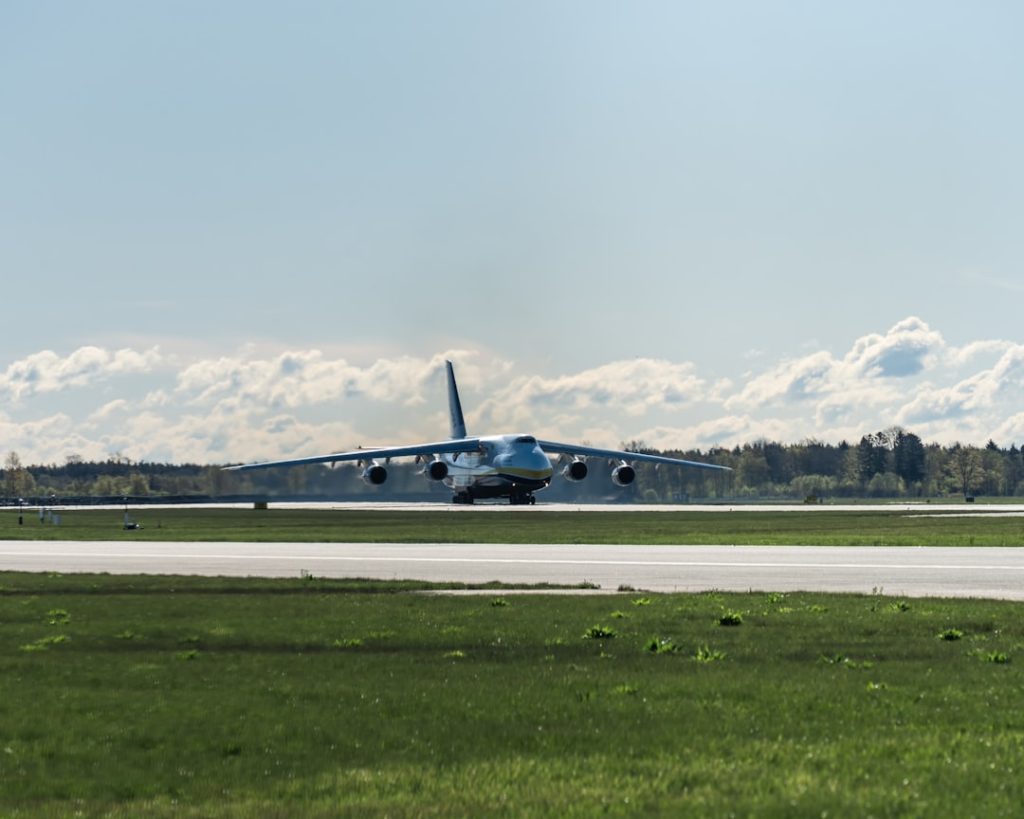The Antonov An-225 Mriya, a marvel of engineering and aviation, stands as the largest cargo aircraft ever constructed. Designed and built in the 1980s in the Soviet Union, this colossal airplane was initially intended to transport the Buran space shuttle, a project that paralleled the American Space Shuttle program. The An-225 is not just a means of transportation; it embodies the pinnacle of Soviet aerospace engineering, showcasing the ambition and capabilities of its time.
With a maximum takeoff weight of 640 metric tons, it has captured the imagination of aviation enthusiasts and professionals alike, becoming a symbol of human ingenuity and the quest for overcoming logistical challenges. The An-225’s significance extends beyond its sheer size; it represents a unique intersection of technology, history, and international cooperation. Its operational capabilities have made it an invaluable asset for transporting oversized cargo that cannot be accommodated by conventional aircraft.
The aircraft’s distinctive design features, including its six turbofan engines and a massive cargo hold, allow it to carry loads that would otherwise require multiple trips or specialized ground transport. As we delve deeper into the history, design, applications, and future of the An-225, we will uncover the layers of innovation and purpose that define this extraordinary aircraft.
Key Takeaways
- The Antonov An-225 is the world’s largest and heaviest cargo aircraft, designed to carry oversized payloads and set new records in the aviation industry.
- The An-225 was originally developed to transport the Soviet space shuttle, Buran, and has since been used for various commercial and humanitarian purposes.
- With a wingspan of 88.4 meters and a maximum takeoff weight of 640 tons, the An-225 is capable of carrying ultra-heavy and oversized cargo, making it a unique and valuable asset in the aviation industry.
- The An-225 has been utilized for transporting large machinery, equipment, and even humanitarian aid to disaster-stricken areas, showcasing its versatility and importance in global logistics.
- The future of the An-225 remains uncertain due to economic and political factors, but its impact and significance in the aviation world cannot be understated, especially in comparison to other large aircraft.
History and development of the An-225
The inception of the Antonov An-225 can be traced back to the early 1980s when the Soviet Union sought to develop a transport aircraft capable of carrying the Buran space shuttle. The design was spearheaded by Antonov Design Bureau, which had already established a reputation for creating large transport aircraft. The An-225 was conceived as a derivative of the An-124 Ruslan, which was already in service as a heavy cargo transporter.
The design process was marked by ambitious goals, as engineers aimed to create an aircraft that could not only transport the Buran but also serve various other heavy cargo needs. Construction of the An-225 began in 1984, and it made its maiden flight on December 21, 1988. However, the collapse of the Soviet Union in 1991 led to a halt in the Buran program and left the An-225 without its primary purpose.
Despite this setback, the aircraft was completed in 1994 and subsequently entered commercial service. Its first operational flight was a testament to its versatility, as it transported humanitarian aid and oversized cargo across various global destinations. Over the years, the An-225 has been utilized for a wide range of missions, from delivering heavy machinery to transporting medical supplies during crises.
Design and specifications of the An-225

The design of the Antonov An-225 is characterized by its impressive dimensions and innovative engineering solutions. With a length of 84 meters (275 feet) and a wingspan of 88.4 meters (290 feet), it dwarfs most other aircraft in existence. The An-225’s fuselage is designed to accommodate oversized cargo, featuring a unique nose that can be raised to facilitate loading and unloading.
This feature allows for easy access to the cargo hold, which has a volume of 1,200 cubic meters (42,000 cubic feet) and can carry payloads up to 250 metric tons. Powering this behemoth are six Ivchenko Progress D-18T turbofan engines, each capable of producing over 51,000 pounds of thrust. This configuration not only provides the necessary lift for such a massive aircraft but also contributes to its impressive range and speed.
The An-225 can reach cruising speeds of approximately 850 kilometers per hour (528 miles per hour) and has a maximum range of around 15,400 kilometers (9,570 miles) when carrying lighter loads. The aircraft’s advanced avionics and navigation systems further enhance its operational capabilities, allowing it to operate in various weather conditions and environments.
Applications and uses of the An-225
| Application/Use | Metric/Description |
|---|---|
| Cargo Transport | The An-225 is capable of carrying oversized cargo such as industrial equipment, machinery, and even other aircraft. |
| Aerospace Industry | It can be used for transporting aerospace components like fuselage sections, wings, and rocket parts. |
| Humanitarian Missions | The aircraft can be utilized for delivering emergency relief supplies, medical equipment, and aid to disaster-stricken areas. |
| Heavy Machinery | It is suitable for transporting heavy machinery, construction equipment, and large vehicles to remote locations. |
The Antonov An-225 has found diverse applications across multiple industries due to its unparalleled cargo capacity. One of its primary roles has been in humanitarian missions, where it has delivered essential supplies during natural disasters and crises. For instance, following the devastating earthquake in Haiti in 2010, the An-225 was deployed to transport large quantities of food, medical supplies, and equipment to aid relief efforts.
Its ability to carry oversized cargo makes it particularly valuable in situations where traditional transport methods are insufficient. In addition to humanitarian efforts, the An-225 has been utilized for commercial purposes by various industries requiring heavy lift capabilities. It has transported large industrial equipment, such as turbines for power plants and components for oil rigs.
The aircraft’s versatility is further demonstrated by its ability to carry unusual cargo configurations; for example, it has transported entire trains and even military vehicles. The An-225’s unique design allows it to accommodate various types of cargo without extensive modifications, making it an attractive option for companies with specialized transportation needs.
Record-breaking achievements of the An-225
The Antonov An-225 is not only known for its size but also for its numerous record-breaking achievements throughout its operational history. One of its most notable accomplishments occurred in 2004 when it set a world record for the heaviest airlifted single item: a 189-ton generator transported from Italy to Armenia. This feat showcased not only the aircraft’s incredible lifting capacity but also its ability to operate efficiently under challenging conditions.
In addition to weight records, the An-225 has also achieved remarkable milestones in terms of payload volume and dimensions. It holds records for transporting some of the largest items ever flown by an aircraft, including oversized machinery and components for various industries. The aircraft’s unique design allows it to carry cargo that exceeds standard dimensions significantly, making it an indispensable asset for specialized transport operations.
These achievements have solidified the An-225’s reputation as a leader in heavy lift aviation.
Future of the An-225

The future of the Antonov An-225 is currently uncertain due to geopolitical factors and operational challenges. As of October 2023, there have been discussions regarding potential upgrades or modifications to enhance its capabilities further. However, these plans are contingent upon funding and international cooperation, which can be complicated by ongoing political tensions in Eastern Europe.
Moreover, with advancements in aviation technology and increasing competition from other heavy-lift aircraft manufacturers, there is speculation about whether new designs will emerge that could rival or surpass the capabilities of the An-225. Nevertheless, there remains a dedicated community of aviation enthusiasts and professionals who advocate for the continued operation and preservation of this iconic aircraft. Its legacy as a symbol of human achievement in aerospace engineering ensures that discussions about its future will continue for years to come.
Comparison with other large aircraft
When comparing the Antonov An-225 with other large aircraft, such as the Airbus A380 or Boeing 747-8, it becomes evident that each serves distinct purposes within aviation. While the A380 is primarily designed for passenger transport with a capacity exceeding 800 passengers in an all-economy configuration, the An-225 is tailored specifically for cargo operations. The Boeing 747-8 Freighter is another notable competitor in the cargo sector; however, it cannot match the An-225’s maximum payload capacity or volume.
The design philosophies behind these aircraft also differ significantly. The An-225’s unique nose design allows for efficient loading and unloading of oversized cargo without requiring specialized ground equipment. In contrast, while both the A380 and 747-8 have impressive range and passenger capacity, they lack the versatility needed for transporting exceptionally large items.
This specialization makes the An-225 an irreplaceable asset in niche markets where heavy lift capabilities are paramount.
Impact and significance of the An-225
The Antonov An-225 Mriya stands as a testament to human ingenuity and engineering prowess within aviation history. Its remarkable design and operational capabilities have allowed it to fulfill critical roles in humanitarian aid and commercial transport across various industries. As we reflect on its legacy, it becomes clear that the An-225 is more than just an aircraft; it symbolizes ambition and innovation during a transformative period in aerospace development.
While its future may be uncertain amid evolving technological landscapes and geopolitical challenges, the impact of the An-225 on global logistics cannot be overstated. It has set benchmarks for heavy lift capabilities that continue to inspire engineers and aviation professionals worldwide. The story of the Antonov An-225 is one of resilience and adaptability—qualities that will ensure its place in aviation history for generations to come.


